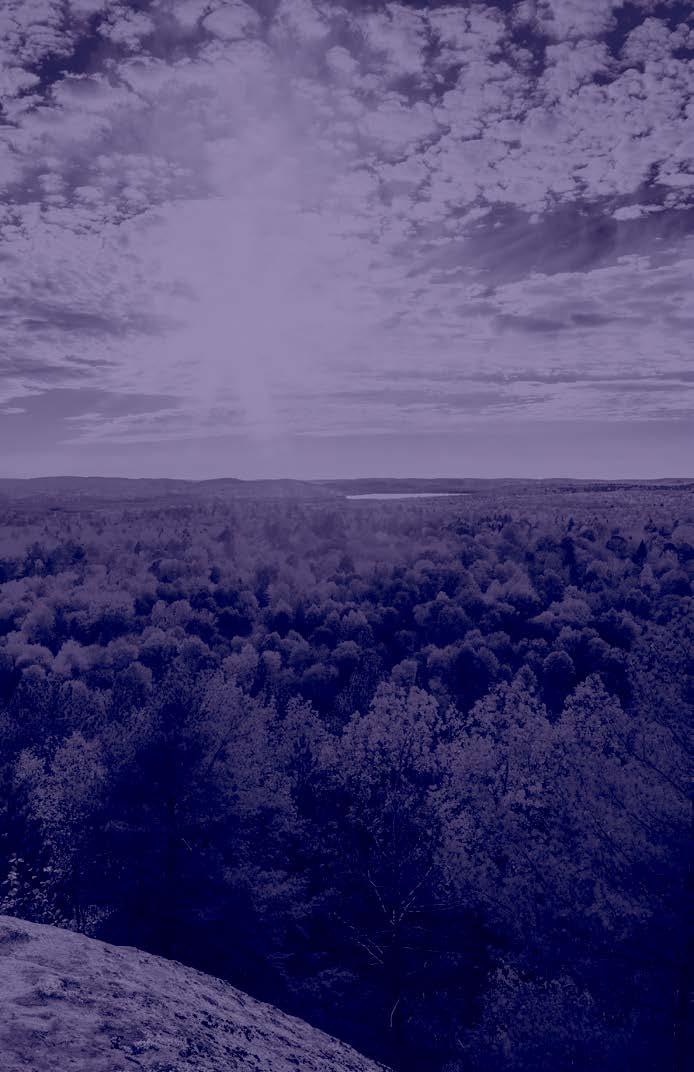










TWO ROW TIMES
County of Brant, ON –
Through the Brant Safe Street Strategy, the County of Brant is taking action to reduce speeding and enhance road safety for all users by implementing Automated Speed Enforcement (ASE) systems.
“Speeding has been an ongoing concern that is frequently voiced by County residents,” said Mayor David Bailey. “By employing Automated Speed Enforcement, we are confirming our commitment to keeping our residents safe.”
The first ASE system will be implemented on Silver Street in Paris on October 1, 2024, in front of North Ward Elementary School.
From September to December 2024 the County will be undertaking a pilot training
program, and no tickets will be issued to drivers violating the speed limits during this period. Fines will begin in early 2025 and drivers will be notified that cameras are in use with updated signage.
“Coming soon” signage has been installed at the location and a community education campaign is being implemented to highlight the details of the system. A new page has also been created on the County of Brant’s website to provide more information and answer frequently asked questions.
“We hope that the community understands that systems such as these are put in place to enhance road safety by reducing vehicle speeds,” said Bailey. “We see Automated Speed Enforcement as another tool in the Brant Safe Streets toolbox.”
The County is planning

to gradually add ASE devices in all School and Community Safety Zones. Locations will be prioritized by evaluating speeding and collision data, pedestrian frequency and safety, nearby industry, vehicle volume, and more.
Research and the experi-


ment tactics, Automated Speed Enforcement is a cost-efficient option for municipalities.
• Research shows a reduction in accidents, injuries, and fatalities associated with decreased speeding.
• Citations are issued to a greater proportion of violators than traditional police enforcement.
• Less court/officer time required per infraction when compared to traditional enforcement programs.
ences of other municipalities show the many benefits of Automated Speed Enforcement, including:
• Allows for 24/7 monitoring and enforcement without the need for constant police presence.
• When compared to other traditional enforce-
The overall vehicle speeds and the number of vehicles travelling over the speed limit decrease when Automated Speed Enforcement was implemented.
• Residents have an increased trust in traffic enforcement fairness and effectiveness.
• Speed cameras have safety benefits over 500 metres or more from the
speed camera site.
The focus of the ASE program is safety and reducing speeds in Community Safety Zones, which include school zones. The goal of a successful ASE program is to be revenue neutral, meaning that the revenues would at least cover the operating and maintenance costs for the ASE program and to not use taxpayer funding. If the program does generate any revenue, the revenue will be placed in a reserve fund that will be used for other road safety initiatives in the County, including expanding the program to other Community Safety Zones. Additional systems will be added in 2025, with promotion through the County of Brant website, social media channels, printed media, signage and other means.
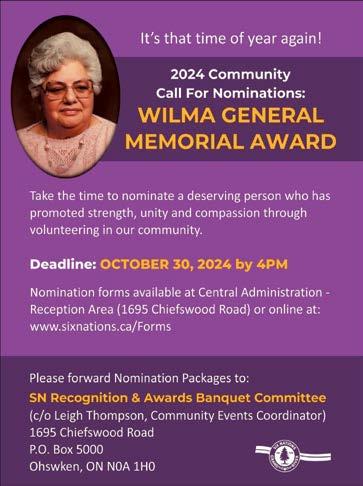
DONNA DURIC donna@tworowtimes.com
TWO ROW TIMES
Although more and more people are recognizing the truth of residential schools with the commemoration of Truth and Reconciliation on Sept. 30 every year, that an apology without changed behaviour is just manipulation.
Aside from acknowledging the harms of residential schools, Indigenous organizations are offering advice on how to support healing through more ways than just acknowledgment.
Seeing Red Media advises supporting Indigenous artists and Indigenous businesses as just one way to further reconciliation.
People are also encouraged to donate to Indigenous organizations.
There are a number of organizations across the country aimed at redressing the harms caused by

residential schools and the Orange Shirt Society is just one of the organizations aimed specifically at supporting residential school healing.
The Orange Shirt Society was born out of the experience of residential school survivor Phyllis Webstad, who went to her first day at a residential school wearing an orange
shirt she was so proud of, only to have it stripped from her body, never to be seen again.
Her experience has now become symbolic of Sept. 30, now federally recognized as Truth and Reconciliation Day, as well as Orange Shirt Day, in honour of Phyllis and all the kids who attended residential schools.

“Truth comes before reconciliation, and we have to remember to keep this in perspective as we move along in our healing journey,” said MCFN Chief Claire Sault, as the community held a commemoration event and drone show at the MCFN community centre on Monday.
Brantford Regional Indigenous Support Centre held a march throughout the city from the Brantford Civic Centre to the Woodland Cultural Centre in honour of the 150,000 children who attended residential schools across Canada.
The colour orange is now symbolic with residential school survivors, along with the slogan, “Every Child Matters.”
Events in Brantford, Six Nations and Mississaugas of the Credit First Nation saw hundreds come out in orange shirts to march in memory of the children who attended residential schools.
And on Six Nations, elected council held a drive-thru giveaway at the Oneida Business Park on Friday, handing out outdoor activity packages to hundreds of families that came through for the event while closing the office on Monday in order to allow staff to observe Orange Shirt Day.
The Ontario Government released the follow-
ing statement in recognition of the National Day for Truth and Reconciliation:
“Today, people in Ontario and across Canada are observing National Day for Truth and Reconciliation. The painful legacy of Indian Residential Schools has resulted in ongoing, intergenerational trauma for Survivors, their families and Indigenous communities. As Ontarians, it is important that we continue to deepen our collective understanding, to honour those who survived and remember the thousands of children who did not make it home.”
“On this important day, we are asked to take a moment to acknowledge those in Indigenous communities who are leading the difficult, traumatic work around Indian Residential School Burial Investigations. Today and everyday, we are committed to joining you on the path towards meaningful reconciliation.”
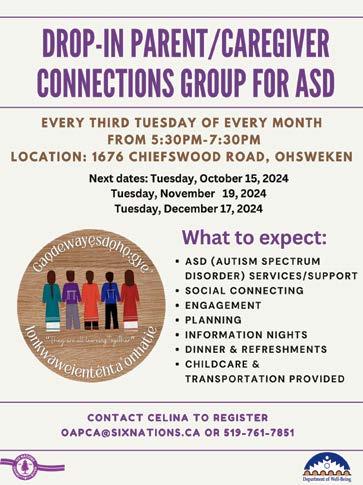
By Mia Rabson
As war spread in the Middle East on Tuesday, Foreign Affairs Minister
Mélanie Joly "unequivocally" condemned Iran's move to fire dozens of missiles into Israel but asked the Jewish state not to respond in a bid to avoid further escalation.
Joly also begged Canadians in Lebanon to leave immediately as Israel began what it is calling a limited ground operation against Hezbollah targets in the southern part of that country.
"These attacks from Iran will only serve to further destabilize the region, and it must stop," Joly said on Parliament Hill. The latest moves by Israel and Iran are risking an "all-out war" in the Middle East, she said.
In the House of Commons, Conservative Leader Pierre Poilievre demanded the government say unequivocally that Israel has the right to defend itself.
Joly said in response that she had been in contact with her Israeli counterparts earlier in the day. In an earlier scrum with reporters, Joly said Israel does have the right to defend itself but that further escalation of the conflict is not going to help.
Last week, Canada joined G7 nations and several Middle Eastern allies in demanding a 21-day ceasefire between Israel and Hezbollah as the fighting intensified. Both Defence Minister Bill Blair and Joly insisted they still believe a diplomatic solution is possible.
"I believe that it is possible to get to peace," Joly said. "I believe that we're in a moment where we need to save lives."
On Friday, the federal government began helping reserve hundreds of seats for Canadian citizens on the few commercial flights still available out of Beirut to Istanbul, after many airlines cancelled their service in and out of Lebanon.
On Tuesday Joly pleaded with people to take the offer.
"If you are offered a seat, please take it. It is time to leave now," she said. "I know it's a tough choice. I know that the situation is extremely difficult, but my priority is your security."
She said 200 people had taken advantage of the available seats over the weekend, and 200 more were on a flight to Istanbul on Tuesday.
About 4,000 people have asked Global Affairs Canada about the offer of help and 1,700 had received a call back to proceed with the booking.
Earlier in the day Joly said about half had gone forward with a booking, but officials from her department clarified later in a media briefing that it was closer to one-third.
The officials said they should be able to book 1,000 seats in total this week, a figure that included the flights that already departed. The department said it will approach Canadians who declined a seat to continually offer one.
The flights to Istanbul cost US$330 and are paid for by the passengers. Ottawa can arrange payment
plans.
For months Canada has been preparing for the possibility of a full evacuation effort for citizens in Lebanon but Blair and Joly have both been clear that won't happen while commercial airlines are still flying out of the country. Germany has used military aircraft to evacuate the families of embassy workers and German citizens with medical issues. The NDP has urged the Liberals to start evacuations now.
The latest escalation comes almost a year after a deadly Hamas attack in Israel on Oct. 7, in which some 1,200 people were killed and another 250 were abducted.
Israel responded with attacks in Gaza that have left more than 41,000 dead, according to Gaza’s health ministry.
Hezbollah and Israel have traded fire across the Lebanon border almost daily since Oct. 8, 2023, with communities in northern Israel evacuated as a result.
An airstrike last week killed Hezbollah's longtime chief Hassan Nasrallah. Two Canadians were killed in Lebanon in Israeli airstrikes, also last week.
On Tuesday night, Canadian MPs held an emergency debate on Canada's response to the Middle East crisis and its evacuation measures, as requested by NDP foreign affairs critic Heather McPherson. This report by The Canadian Press was first published Oct. 1, 2024.
— With files from The Associated Press
By Liam Casey
Ontario's only First Nation representative at Queen's Park plans to soon table proposed legislation, in his own Indigenous language, to have the National Day for Truth and Reconciliation declared a paid provincial holiday.
The day is a federal statutory holiday, but not a provincial one in Ontario. New Democrat deputy leader Sol Mamakwa, who represents the northwestern riding of Kiiwetinoong, wants Ontario to follow the federal government's lead and said he hopes Premier Doug Ford's Progressive Conservatives will support the idea.
"It's always First Nations who take the day off and do their thing and go reconcile, but I think it's important for other Ontarians to have that day off to acknowledge, to reflect, to mourn, to learn of the real history of residential school," Mamakwa said in an interview.
The day recognizes the abuse suffered by Inuit, First Nations and Metis people at hundreds of state- and church-run residential schools across the country.
It is a statutory holiday for federally regulated workers and employees in some other provinces such as British Columbia.
The day is an evolution of Orange Shirt Day, an initiative started in 2013 and inspired by Phyllis Webstad's story of having the orange shirt her grandmother gave her taken away when she arrived at a residential school in 1973 at the age of six.
Mamakwa, who was forced into a residential school himself, said he's seen the horrors of those institutions first-hand. He plans to introduce a private member's bill in November to push for a provincial holiday.
"There's no wrong in it, it's the only right thing to do," said Mamakwa, who is from Kingfisher Lake First Nation.
"Rather than just a day of reflection, rather than just a day of mourning, it should be more than that, where all Ontarians have a day off and they can learn about the that day, what Orange Shirt Day is, what truth and reconciliation is."
Greg Rickford, Ontario's minister of Indigenous affairs, said he was "not entirely persuaded" by Mamakwa's idea but did not dismiss it.
"We have not reviewed the proposed legislation so we don’t want to presuppose anything," he said in a written statement. "I am not entirely persuaded that designating the day a holiday will do it justice."
The minister said some First Nations leaders have said a statutory holiday is currently not the appropriate approach and would rather focus on education about the legacy of residential schools and efforts to bring home children who did not return.
"Further consultation with First Nations communities, survivors, and leaders is crucial to ensure that any paths forward align with priorities for meaningful recognition," Rickford said.
Some 150,000 First
Nations, Inuit and Métis children were forced to attend residential schools, the last of which closed in 1996.
An estimated 6,000 Indigenous children died at the institutions, but many experts believe the number to be higher. The National Centre for Truth and Reconciliation has recorded the names of more than 4,000 who died. Many schools across Ontario currently mark the National Day for Truth and Reconciliation by encouraging students to wear orange shirts and to learn about residential schools. Many schools also learn about Indigeneity throughout the week and the year.
Mamakwa said he plans to first discuss his proposed bill in the legislature in Anishininiimowin, known in English as Oji-Cree –which will mark only the second time the language is spoken inside the legislative chamber.
Ontario's legislature had not previously allowed interpreting and transcribing a language other than English and French. Mamakwa had worked with then-government house leader Paul Calandra to change the rules to include any Indigenous language spoken in Canada.
A statutory holiday for Ontarians would be another form of reconciliation, Mamakwa said.
"When we talk about this legislature, when we talk about this government, that would be reconciliation," he said. "That's the path, that's the route to reconciliation and we've got to walk that path."






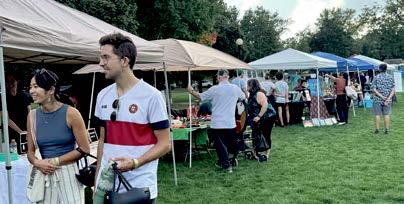

By Sidhartha Banerjee
Barbara Nolan, an Anishnaabe elder on a mission to promote her nation's language, says she loves to hear stories about how her work is influencing children.
Nolan launched a series of online videos last month to introduce the language — called Anishinaabemowin — to the very youngest members of the community.
"I know this one grandparent, she sends me a picture of her grandchildren sitting on the floor and they're watching a big-screen TV," Nolan said in a recent interview from Garden River First Nation, east of Sault Ste. Marie, Ont. "And guess who's on that big-screen TV? It's me!"
Nolan, 77, is an elder born in Wiikwemkoong First Nation, and a residential school survivor. Growing up, she said, she heard her parents only speak Anishinaabemowin.
"I never heard my dad speak English or my mom for that matter," she said. "And so we grew up hearing all this language — grandparents, aunties, uncles, neighbours, you know, the whole community."
Nolan says many residential school survivors had their language taken from them, a dispossession she actively resisted but one that left an indelible mark on others.
"I would say they don't want to speak it — even today," Nolan said. "They know it, but they don't want to speak it. It's too painful for them. They
In her videos, Nolan uses immersion techniques — instead of teaching the language, she encourages people to live it. Her content tackles a wide range of topics from Halloween to animals to the blight of residential schools, presented in a way that a child can understand.

think somebody is going to come and do something harmful to them … they're going to be punished if you speak your language." Nolan has tried to buck that trend, working to revive and spread the language since the early 1970s. She works as a daycare language instructor in Garden River, playing with kids in Anishinaabemowin, introducing them to basic words. When the children she looks after start to speak for the first time, they sometime uses Anishnaabe words alongside English.
But those children, she said, aren't immersed in the language; when they aren't with her, they don't speak it — or hear it. "And I thought, I think it's about time that I did videos in the language, fun videos, animated videos."
So she teamed up with Esbikenh, an Anishinaabe Grade 3 teacher in Walpole Island First Nation who creates digital characters.

Together, they created online videos, presented on TikTok and other social media; she has even participated in the development of an application that teaches Anishinaabemowin.
Randy Morin, an Indigenous studies professor at the University of Saskatchewan, says there are about 63 Indigenous languages spoken in Canada and only three are expected to be around in the long term. "As you know, our populations are aging and they're the ones that still speak languages, and unfortunately, we're losing their languages very rapidly," Morin said in an interview.
A major reason for language loss, Morin said, is federal government policy, including the residential school system. "But now it's our aging population, our elders are passing away so fast and when they pass away, we lose so much: we lose language,
we lose the values, our world view of how you see the world and interact with the world."
Indigenous languages, he said, should be made official languages in Canada, so that they can receive funding proportional to the money that is invested in English and French programs across the country. "We lose our stories and we kind of lose the meanings of words that are so significant, so we need to hold on to these languages for a variety of reasons," Morin said.
Indigenous languages, he added, can hold answers to pressing modern questions. The world's last biodiversity-rich lands are owned and managed by Indigenous people, he said, whose languages are encoded with the techniques to manage the territory. The world may lose important knowledge about climate change and sustainable development when those languages are lost.
Knowledge, he said, is "embedded in the languages and how we look at the world, how we interact with the world. So we have much to lose."
Nolan is trying to leave some of that knowledge behind. The first 10 videos were published online in August, with more to come. She intends to keep going for as long as she can — leaving behind something that can stand the test of time.
Locals in Garden River have told her how much they like the efforts. "They will stop me on the street and they say, 'Barbara, my little granddaughter, she likes your video. She just loves you, you know,' and that is so rewarding for me to hear," Nolan said. "It's for the kids. I have done that for the kids."
This report by The Canadian Press was first published Sept. 27, 2024.






By Hannah Alberga
Dr. Michael Anderson clearly remembers a First Nations child flown into the Toronto pediatric ward where he was working 30 years ago.
Standing in front of the nursing station, Anderson overheard a doctor he considered a mentor say the child's parents will "be drunk for a week."
"'We won't see them. They'll come and pick them up when it's time for him to go home,'” Anderson, a surgical oncologist and palliative care physician in Toronto, recalls hearing. Anderson, who has Mohawk ancestry with family roots in Tyendinaga Mohawk Territory, says he learned to hide his Indigenous ties after that incident.
“Because if they know that I'm First Nations, they're going to be thinking about me exactly the same as they are about this family. And I need these people to write me letters of recommendation," Anderson says of his thinking at the time. While conversations have become more inclusive since then, Anderson says discrimination persists in Canada's medical field.
Despite making up more than 4.5 per cent of Canada’s population, less than one per cent of the country’s physicians identify as Indigenous, according
to the Canadian Medical Association.
In 2019, Canada’s 17 medical schools vowed to increase Indigenous enrolment in response to eight of the 94 calls to action by the Truth and Reconciliation Commission.
Dr. Nel Wieman, chief medical officer of health at First Nations Health Authority in British Columbia, says that while there are more Indigenous physicians now than when she was a psychiatry resident in the '90s, representation is still far behind what it should be.
“I think, rather sadly, that not much has changed,” says Wieman. The Canadian Medical Association acknowledged its failures with a historical apology last week to Indigenous patients and health-care providers for the racism and discrimination they've been enduring. Several Indigenous doctors who spoke with The Canadian Press said the apology will only hold meaning if action follows.
Putting Indigenous health in the hands of Indigenous practitioners is widely regarded as one of the best ways to create a culturally safe space for patients. At 39, Dr. Elisa Levi set out to do just that. She went back to school to become a family doctor in 2018 with the intention of returning
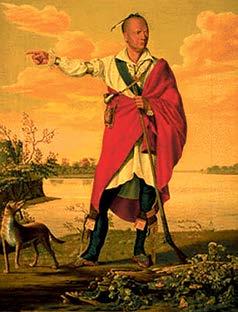
to her community, Chippewas of Nawash Unceded First Nation on the shores of Georgian Bay in Ontario. As a kid, she had to venture to a nearby town for doctor appointments. She says her grandmother, a residential school survivor, told her she felt inferior and scared of physicians.
Levi says she hoped to practice in her community but points to myriad hurdles including funding for primary clinics on reserves.
“If you want to practice directly in your community, in my experience in Ontario, there isn't a pathway to do that,” unless there's a pre-existing family health team already operating, she says.
Yet Levi is determined to find a way.
“We have to think about what it means to be Indigenous, like a First Nations person connected to culture, working within a western framework. How do we de-institutionalized the health-care experience? That's kind of the question that's driving me forward.”
MEDICAL SCHOOL
Canadian medical schools have taken steps toward integrating Indigenous health into their teachings, but not long ago, “racism was embedded in the curriculum,” Wieman says.
As a '60s Scoop survivor “irrevocably harmed” by physicians, Wieman sat
down for her first class at Hamilton's McMaster University in the 1990s. A case study described a First Nations woman with malnourished kids who lived in extreme poverty and had an alcohol addiction. She had ignored her physician's advice and developed diabetes. Wieman says students were asked: How would you treat this patient?
When she completed her residency, Wieman was the only Indigenous female psychiatrist in the country, according to the CMA. “It was very isolating,” she says.
Little has changed. Less than half of one per cent of physicians in British Columbia are First Nations, according to the First Nations Health Authority. The organization is preparing to open 13 First Nations primary care centres to “dismantle and eradicate Indigenous-specific racism from B.C.’s health-care system,” but there is a very small pool of First Nations doctors to staff them, says Wieman.
RACISM AMONG PEERS
During her psychiatry residency, Wieman remembers physicians patting her on the head like she was a dog. “You can't really retaliate at that time, especially because the power differential is too great. You know, you start getting a reputation as being difficult and
disruptive and what you're really trying to do is fight for equity and basic humanity to be respected as a fellow medical professional,” says Wieman.
Dr. James Makokis also recounts experiences of overt discrimination in 2006 when he studied at University of Ottawa’s medical school.
“What I soon realized in medical school is that I just had to accept the racism and discrimination that we experience because as a medical student with zero voice and zero power, my success in the program depended on me just putting my head down and accepting that this violence was going to happen,” Makokis says.
On his first day as an on-call resident during an obstetrics and gynecology rotation in Victoria, he waited by his pager all day and night.
At 3 a.m., he says a white medical school student walked into the call room and said: “They are not calling you.”
As he went to check what was going on, Makokis says a nurse stopped him from approaching patients by pulling his braid with such force that his head jerked back. He recalls her saying, "You can't go in there. Who do you think you are?’”
“If that happens to me as an Indigenous physician with inherent power
and privilege, apparently because I'm a doctor, then it's easy to understand how women can be forcefully sterilized and how Brian Sinclair can die of a urinary tract infection," he says, referring to the 45-yearold Indigenous man who died waiting for care in a Winnipeg emergency department in 2008.
As a physician who identifies as a gay or two-spirit person and provides transgender-focused health care in south Edmonton, Makokis is intimately familiar with the need for cultural spaces in the Indigenous healing process.
When Makokis’ husband was recently diagnosed with testicular cancer, they wanted to smudge with the medical team.
“They did arrange for this to happen, which I thought was an incredible show of solidarity and allyship of the physicians,” says Makokis, a Nehiyô family physician from Saddle Lake Cree Nation.
But in that Alberta hospital, there wasn't a ceremonial room. There wasn't a smudging room.
They found an unused room in the hospital for the ceremony, a traditional healing practice that involves the smoke of burning sacred plants.
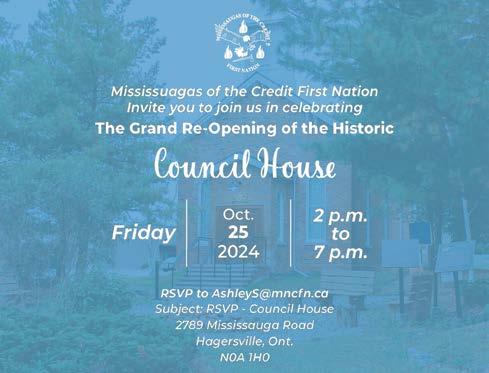
By Amanda Stephenson
When Annie Korver sits down with a new corporate or small business client, she encourages them to focus first on the "truth" part of Truth and Reconciliation.
Organizations often hire Korver to help them develop a reconciliation action plan — the term for a formal document laying out what a company plans to do to improve its relationship with Canada's Indigenous people.
But the Fernie, B.C.-based founder and principal of Rise Consulting says companies first have to grapple with the reality of this country's painful past. "I'll ask them, 'What experiences have you had? Have you read some books? Have you been in (an Indigenous) community?' And that helps me be able to shape recommendations for how we might walk together," said Korver.
"We always start at the be-
ginning with the history of colonial harm, because a lot of folks, they still don't know. That's the norm, actually. They will say, 'I wasn't taught this.'"
It's been almost a decade since the Truth and Reconciliation Commission released its final report summarizing the legacy of residential schools in Canada. As part of its report, the commission included a call to action for corporate Canada to make commitments to Indigenous people in a variety of areas, including consultation, relationship building, jobs and training. And as businesses work to address that call, it has created opportunity for Indigenous-led companies like Korver's. At Rise, Korver and her associates offer everything from advice on how to "decolonize" a company's brand to how to develop an Indigenous procurement strategy.
Another consulting company, Eagle Spirit Business Development, counts
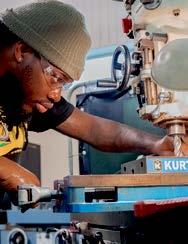
cultural awareness training among the services it offers to its corporate clients. Founder Jeremy Thompson, whose office is located on the Tsuut'ina Nation near Calgary, said he helps clients recognize that some of the day-today phrases and terms they use in their business may be offensive to Indigenous Canadians.
"One of the most common ones is 'totem pole,' as in, 'I'm the low man on the totem pole,'" Thompson said.
"And a lot of the time, people are using 'pow-wow' to refer to a meeting of co-workers."
Thompson also often works as a go-between for businesses and Indigenous communities, helping to make introductions when companies want to do business or build a project on First Nations land.
This kind of role isn't new — corporations have long hired Indigenous relations advisers to help smooth
their path, especially since Indigenous consent has become a must-have when it comes to getting regulatory approval for major projects such as oil pipelines or power transmission lines.
Thompson said while some companies still see Indigenous engagement as a box they must check, the Truth and Reconciliation Commission's call to action has prompted others to genuinely try to do better.
"There are some companies that are still doing the minimum requirements because they have to for regulatory or project status," he said.
"But there are some, and I'm working with one company like this today, that are genuinely going above and beyond ... they're doing things because they want to, not because they have to."
Some of Canada's largest corporations have both in-house and external experts to help them with
their reconciliation goals.
At the Bank of Montreal, an external Indigenous advisory council provides advice, but the bank also has dedicated in-house roles.
For example, Clio Straram — BMO's head of Indigenous banking — leads a team dedicated to offering financial services to Indigenous communities, while Amanda Ens works to improve the bank's recruitment practices as head of Indigenous talent strategy.
"As an Indigenous woman whose family has been directly impacted by residential schools, I am very glad that my voice now contributes to decisions that support Indigenous peoples," said Ens. Straram said she feels her job is one of the most rewarding roles at the bank.
"The most common thing we do, which is lending to First Nations and Indigenous governments for infrastructure building on reserve and in their
communities ... just has such an impact on people's lives."
Korver of Rise Consulting said one of the best parts of working with corporate clients on Indigenous issues is witnessing what she calls "a-ha" moments. These often come when she is leading a workplace training session for non-Indigenous employees, many of whom have never given serious thought to issues like economic reconciliation or decolonization.
"You might see it in the form of goosebumps on their skin, or maybe their eyes get tears in them. They've made a small change, and because of that they will use their agency and influence in a bigger way to support the advancement of Truth and Reconciliation," she said. "I love those moments." This report by The Canadian Press was first published Sept. 29, 2024.


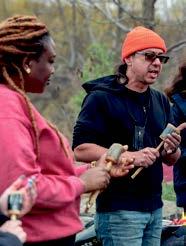
By Melanie Lidman, Aamer Madhani, And Bassem Mroue
JERUSALEM (AP) — Iran
launched at least 180 missiles into Israel on Tuesday, the latest in a series of escalating attacks in a yearslong conflict between Israel and Iran and its Arab allies that threatens to push the Middle East closer toward a regionwide war. The orange glow of missiles streaked across Israel's night sky as air raid sirens sounded and residents scrambled into bomb shelters. Israel vowed retaliation for Iran’s barrage, which it said had caused only a few injuries.
Before Iran's attack, Israel had landed a series of devastating blows in recent weeks against the leadership of Hezbollah in Lebanon. It then ratcheted up the pressure on the Iran-backed militant group — which has been firing rockets into Israel since the war in Gaza began — by launching
what it said is a limited ground incursion in southern Lebanon. Israel has said it will continue to strike Hezbollah until it is safe for citizens displaced from homes near the Lebanon border to return. Hezbollah has vowed to keep firing rockets into Israel until there is a cease-fire in Gaza with Hamas, which is also supported by Iran.
Israeli military spokesman Rear Adm. Daniel Hagari said the country’s air defenses intercepted many of the incoming Iranian missiles, though some landed in central and southern Israel. Israel’s national rescue service said two people were lightly wounded by shrapnel. In the West Bank, Palestinian officials said a Palestinian man was killed by a missile that fell near the town of Jericho, though it wasn't clear where the attack originated.
Israeli Prime Minister Benjamin Netanyahu vowed late Tuesday to
retaliate against Iran, which he said "made a big mistake tonight and it will pay for it.”
Israel and Iran have fought a shadow war for years, but rarely have they come into direct conflict.
Israel considers Iran to be its greatest foe -- citing Iran’s repeated calls for Israel’s destruction, its support for Arab militant groups and its nuclear program. Iran denies Israeli accusations that it is developing a nuclear weapon.
Moments before Iran launched its missiles, a shooting attack in Tel Aviv left six people dead, police said, adding that the two suspects who had opened fire on a boulevard in the Jaffa neighborhood had also been killed.
In the U.S., White House National Security Adviser Jake Sullivan called Iran’s missile attack a “significant escalation,” although he said it was ultimately “defeated and ineffective,” in part because of assistance from the U.S. military in shooting down

some of the inbound missiles. President Joe Biden said his administration is “fully supportive” of Israel and that he’s in “active discussion” with aides about what the appropriate response should be to Tehran.
The U.N. Security Council scheduled an emergency meeting for Wednesday morning to address the escalating situation in the Middle East.
Iran launched another direct attack on Israel in April, but few of its projectiles reached their targets. Many were shot down by a U.S.-led coalition, while others apparently failed at launch or crashed in flight.
Iran said it fired Tuesday's missiles as retaliation for attacks that killed leaders of Hezbollah, Hamas and the Iranian military. It referenced Hezbollah leader Hassan Nasrallah and Revolutionary Guard Gen. Abbas Nilforushan, both killed in an Israeli airstrike last week in Beirut. It also mentioned Ismail Haniyeh, a top
leader in Hamas who was assassinated in Tehran in a suspected Israeli attack in July.
Earlier Tuesday, Israel said it had begun limited ground operations against Hezbollah in southern Lebanon.
Israeli airstrikes and artillery fire pounded southern Lebanese villages, and Hezbollah responded with a barrage of rockets into Israel.
There was no immediate word on casualties.
While Hezbollah denied Israeli troops had entered Lebanon, the Israeli army announced it had also carried out dozens of covert ground raids into southern Lebanon going back nearly a year.
If true, it would be another humiliating blow for Hezbollah, the most powerful armed group in the Middle East. Hezbollah has been reeling from weeks of targeted strikes that killed Nasrallah and several of his top commanders.
On Tuesday morning, Israel warned people in
southern Lebanon to evacuate to the north of the Awali River, some 60 kilometers (36 miles) from the border and much farther than the Litani River, which marks the northern edge of a U.N.-declared zone intended to serve as a buffer between Israel and Hezbollah after their 2006 war.
The border region has largely emptied out over the past year as the two sides have traded fire. But the scope of the evacuation warning raised questions as to how deep Israel plans to send its forces into Lebanon. Questions raised over whether Israeli forces entered
An Associated Press reporter saw Israeli troops operating near the border in armored trucks, with helicopters circling overhead, but could not confirm ground forces had crossed into Lebanon. Ahead of the Israeli announcement of an

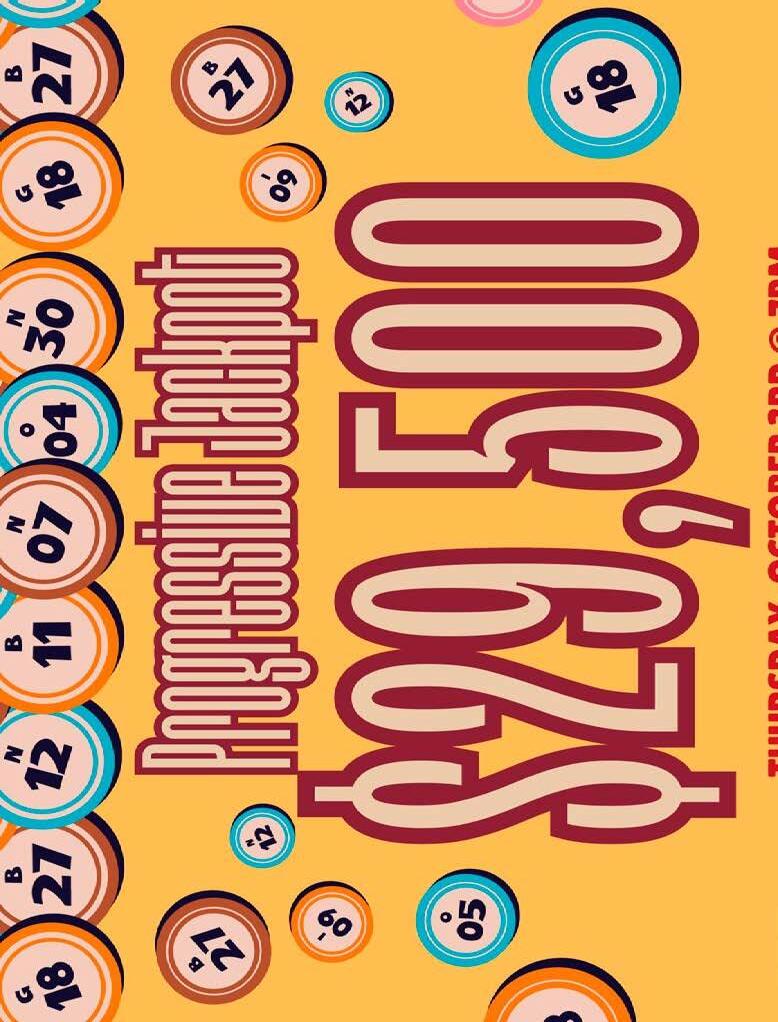

By Alessia Passafiume
The smell of sage and sweetgrass floated in the air Monday over a mostly sombre ceremony in Ottawa to reflect on the legacy of residential schools and remember those who survived — and the thousands who didn't.
Amid the more difficult moments at the National Day for Truth and Reconciliation ceremony on Parliament Hill came a few moments of levity and celebration.
Dignitaries and children got up on their feet and started dancing. Ribbon skirts twirled and orange shirts blazed through the crowd under the heat of a late September sun.
Gov. Gen. Mary Simon, her orange T-shirt visible under a black pantsuit, stood clapping in the middle of a circle of people dancing.
Immigration Minister Marc Miller was passed a hand drum by a woman in the crowd and began to play along.
"I've learned a few things as the (former) minister of Indigenous Affairs over the last four years and that is not to deny Indigenous women that are about 55, 60 years old that tell you to do something," said Miller after the ceremony wrapped up.
More than 150,000 children were forced to attend residential schools, and many survivors detailed during the Truth and Reconciliation Commission the horrific abuse they suffered.
An estimated 6,000 children died while attending the schools, although experts say the actual number could be much higher. The ceremony was one of several across Canada to mark the day that officially
Constable - Contract Position
began in 2021, fulfilling one of the calls to action in the Truth and Reconciliation Commission report.
Orange shirts have become a symbol of reconciliation, inspired by the story of residential school survivor
Phyllis Jack Webstad, who has recounted having a new orange shirt taken from her on her first day at a residential school.
"The residential school system was intended to destroy us, and they did not succeed," Stephanie Scott, executive director of the National Centre for Truth and Reconciliation, said to roaring applause in Ottawa. "Our children suffered in those institutions, and to this day, their spirits call out to all of us to be remembered and honoured."
Scott talked about the importance of believing survivors, noting her email inbox is often filled with
Applications for a contract position for Constable with the Six Nations Police are now being called for.
All applicants must fill out a standard application form available at the Six Nations Police Station.
CRITERIA for applicants are as follows:
Minimum Requirements to be considered for a career in First Nations Policing with the Six Nations Police Service, you must:
- Be 19 years of age or over and able to provide an official birth certificate or proof of age;
- Be physically and mentally able to perform the duties of the position having regard to your own safety and the safety of members of the public
- Have successfully completed at least 4 years of Secondary School education or its equivalent (official transcripts and diplomas will be required)
- Be of good moral character and habits, meaning that you are an individual other people would consider being trustworthy and having integrity, with no criminal record;
- certified by a physician to be fit for duty as a front line Six Nations Police Constable and able to pass physical tests which are required in the recruiting process
- Possess a valid driver’s license with no more than 6 accumulated demerit points, permitting you to drive an automobile in Ontario with full driving privileges
- Be able to pass a security clearance as well as background investigation, credit card and reference checks
If you have any criminal convictions under a Federal Statute you must obtain a pardon.
Special Requirements – for the Six Nations Police Service, in order to address the unique and at times urgent needs of the Six Nations of the Grand River Community and Haudenosaunee culture, additional requirements include:
- Extensive knowledge of the unique social dynamics of the Six Nations of the Grand River Territory
- A sound understanding of Haudenosaunee culture, customs, traditions and social political issues of the Six Nations of the Grand River
- Six Nations of the Grand River Band Membership/Citizenship and residency is considered a preferred asset and
- Membership or extensive working experience with any Indigenous Nation will also be considered an asset
Desirable Qualifications:
• Six Nations Band member preferred
Assets:
• Previous policing related experience
• Law and security courses, etc.
Closing Date: Applications must be received by 3:00 p.m October 10, 2024
Applications in complete form are to be mailed or hand delivered to:
Six Nations Police P.O. Box 758 2112 4th Line Road Ohsweken, Ontario N0A 1M0
Attention: Policing Administrator
For further information, please contact the Policing Administrator at 519-445-4191.
COVID-19 Restrictions will be exercised.
people trying to discredit survivors' stories.
"Denialism — it's disgusting, it's disheartening. And I hope that those people that deny residential school systems educate themselves one day," she said.
Prime Minister Justin Trudeau travelled to Inuvik, N.W.T., to take part in events there. He signed an agreement on child and family services with the Inuvialuit Regional Corporation.
At a local community feast, he told the crowd that the $500-million, 10-year deal will make sure kids are protected.
Trudeau said the previous Conservative government under Stephen Harper, whose government issued an apology to former students of the residential school system in 2008, "didn't really do anything on reconciliation."
He said his Liberal government has signed landmark agreements and announced investments and partnerships with Indigenous people, and the work is changing the country for the better.
"The true journey of reconciliation will take decades," Trudeau said.
Conservative Leader Pierre Poilievre participated in a different event with Indigenous leaders and, in a statement, recalled the "dark history of excessive government overreach" that brought long-lasting suffering to Indigenous communities.
"Indigenous peoples must have the freedom to determine their futures, preserve their languages, develop their resources, use their talents and celebrate their cultures," he said.
"Through a new approach and through the unmatched resilience of Indigenous people, Canada can achieve reconciliation and a brighter future for all."
NDP Leader Jagmeet Singh marked the day in Thunder Bay, Ont., at the Honouring Our Children Run. He also attended a feast at Fort William First Nation.
"Reconciliation isn't politics — it's about justice," Singh said in a social media post.
"As a country, we must take responsibility and act."
In Fredericton, Amanda Myran Dakota of Wolastoqey First Nation sat with elders holding a drum, which she later played at a ceremony.
Since Truth and Reconciliation Day was created, she said, "there have been some baby steps, but there is a lot of work that has to happen."
The number of Indigenous children in foster care amount to a "modern-day residential school," she added.
Na’kuset, executive director of the Native Women’s Shelter of Montreal and an organizer of a ceremony in Montreal, said she hoped to see more young people get involved in the movement. The Truth and Reconciliation Commission report has been around for nearly a decade, she said, but only 11 of its 94 calls to action have been implemented. "So who's going to do it if the adults now, the current government, isn't going to implement them? We're hoping that next generation is going to do it," she said.
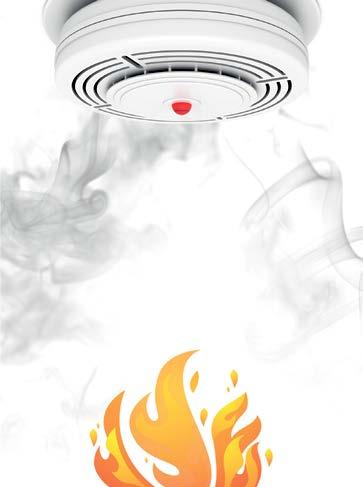
continued from page 9 incursion, U.S. officials on Monday said Israel had described launching small ground raids inside Lebanon as it prepared for a wider operation.
U.N. spokesman Stephane Dujarric said Tuesday the U.N. peacekeeping force in southern Lebanon has seen sporadic incursions by Israeli military forces, but “they have not witnessed a full-scale invasion.”
Hagari, the Israeli army spokesman, said Israel had carried out dozens of small raids inside Lebanon since Oct. 8, when Hezbollah began firing rockets into Israel after the outbreak of the war in Gaza.
Hagari said Israeli forces had crossed the border to collect information and destroy Hezbollah infrastructure, including tunnels and weapons.
Israel has said Hezbollah was preparing its own Oct. 7-style attack into Israel. It was not immediately possible to confirm those claims.
Hagari said Israel’s aims
for its current ground offensive in Lebanon were limited. “We’re not going to Beirut,” he said.
The Israeli military was accused of lying to the media in 2021 when it released a statement implying ground troops had entered Gaza. The military played down the incident as a misunderstanding, but well-sourced military commentators in Israel said it was part of a ruse to lure Hamas into battle.
Israel strikes more targets and Hezbollah fires rockets
The Israeli military said Hezbollah had launched rockets at central Israel on Tuesday, setting off air raid sirens and wounding a man. Hezbollah said it fired salvos of a new kind of medium-range missile at the headquarters of two Israeli intelligence agencies near Tel Aviv. Hezbollah had also launched projectiles at Israeli communities near the border, targeting soldiers without wounding anyone.
Israel's statements indicated it might focus its ground operation on the narrow strip along the border, rather than launching a larger invasion aimed at destroying Hezbollah, as it has attempted in Gaza against Hamas.
Hezbollah and Hamas are close allies backed by Iran, and each escalation has raised fears of a wider war in the Middle East that could draw in Iran and the United States, which has rushed military assets to the region in support of Israel.
Israeli strikes have killed over 1,000 people in Lebanon over the past two weeks, nearly a quarter of them women and children, according to the Health Ministry. Hundreds of thousands have fled their homes.
Hezbollah is a well-trained militia, believed to have tens of thousands of fighters and an arsenal of 150,000 rockets and missiles. The last round of fighting in 2006 ended in a stalemate, and both

sides have spent the past two decades preparing for their next showdown. Recent airstrikes wiping out most of Hezbollah’s top leadership and the explosions of hundreds of pagers and walkie-talkies belonging to Hezbollah indicate Israel has infiltrated deep inside the group’s upper echelons. The group’s acting leader, Naim Kassem, said Monday that Hezbollah commanders killed in recent weeks have already been replaced.
As the fighting intensifies, European countries have begun pulling their diplomats and citizens out of Lebanon.
Mroue reported from Beirut and Madhani reported from Washington. Associated Press writers Kareem Chehayeb in Beirut and Zeke Miller and Lolita C. Baldor in Washington contributed.
Follow AP’s war coverage at https://apnews.com/ hub/israel-hamas-war
By Jace Koblun
Pets can be excitable. Excited pets can pose a safety hazard in homes where open flames are commonplace.
The National Fire Protection Association estimates that around 1,000 home fires each year are started by pets. Pet owners can implement strategies recommended by the American Kennel Club and ADT Security Services to reduce the risk of fire in their homes. Be especially careful around and mindful of open flames. Pets can easily tip over candles and gain access to fireplaces when open flames are burning. Extinguish such flames whenever leaving a room, or ask someone to come in and look after pets so they are not left unattended around flames. Even candles on fireplace mantels pose a hazard as curious cats can leap onto mantelpieces and tip over the candles.
Cover stove knobs. Stove knobs are another potential fire hazard in homes with curious pets. Knob covers prevent pets from accidentally turning on burners when no one is looking. Pet owners who let their pets roam free around the house while they’re at work or out running errands should cover stove knobs before leaving their homes. Purchase flameless candles. Flameless candles are a great option for pet owners whose pets are energetic or especially curious. Flameless candles are battery-powered and provide ambient light without an open flame. Consider crating pets or limiting access to certain areas if animals are not yet house-trained. Puppies and kittens are especially curious and eager to explore their new surroundings. That makes it easy for them to find trouble even in areas where pet owners think there isn’t any.
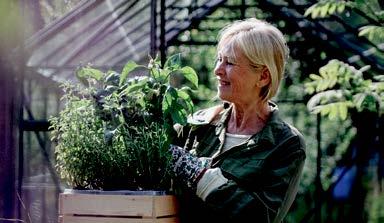

JIM WINDLE jim@tworowtimes.com
TWO ROW TIMES
UTICA NY - Team Haudenosaunee returned home from Utica New York with double bronze medals in both men’s and women’s events at the World Box Lacrosse Championships.
Both the mens and women’s team Haudenosaunee were festooned with Six Nations of the Grand River talent along with Haudenosaunee players from across Iroquoian Canada and the Eastern States.
A total of 33,978 fans attended the championships in person while thousands more watched on TV. There were 131 games of action in Utica, New York, with the United States taking home the Gold Medal in the first-ever women’s box championship and Canada securing the Gold medal in the men’s championship. Additionally, heading into the final day of the championship, World Lacrosse had already amassed more than 30 million impressions, 20 million video views and 1 million engagements, as well as 7.5 percent audience growth as the organization secured the most successful event on its digital channels in history.
The medal games were played Sunday complet-
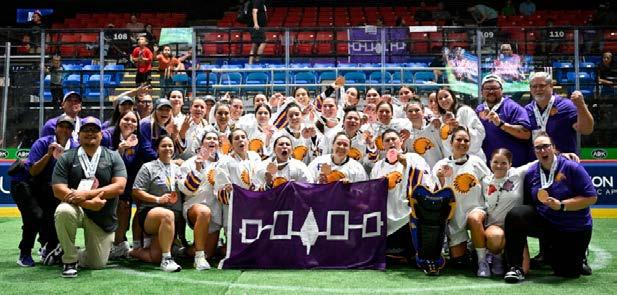
ing ten days of world showcase lacrosse from nearly every country in the world, dramatically showing just how popular the Creator’s Game has become in recent years.
Thirty-eight teams began the tournament which was whittled down to 26 for the second round.
The Haudenosaunee women took home the first medal ever awarded in a women’s box championship, and became the first Haudenosaunee women’s team to win a medal at a World Lacrosse Championship.
Meanwhile, the men’s unit kept the Team Haudenosaunee string of medals
going with its bronze award. They have medaled in every world Championship since the tournament began in 2006.
The 2024 World Lacrosse Box Championships concluded with United States taking home the gold medal in the first-ever women’s box championship and Canada securing the gold medal in the men’s championship.
The women began the series with an 11-4 loss to Team USA but rebounded with a 15-6 win over England and a 17-3 win over the developing Hong Kong, China team.
Next game for the girls was against the Nether-
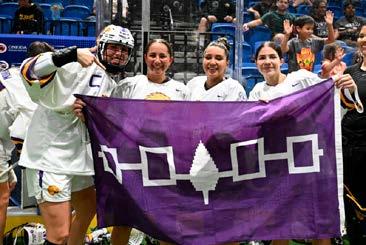
lands which they won 7-2 in a close checking low scoring affair. After loosing 19-3 to the powerful Canadians in Game 1, they closed out the tourney with the 21-4 Bronze Metal victory over the Australians.
Fawn Porter was on fire with three goals and five assists in that game. Farrah Blackbird scored three and assisted on three, Carey-Leigh Vyse scored two and assisted on three, and Tammia Bomberry also had a prosperous game with three goals and two assists.
Other Haudenosaunee women’s goals came from Trysten Burns (1G,5A), Ava Gabriel (3G), John Lindsay (1G,1A), Mackenzie Shigwadja (1G), Kendall Tabobandung (1G,1A), Tallis Tarbell (2G,1A), and Mekwan Tulpin (1G).
0n the men’s side, the Haudenosaunee Nationals also began with a pair of defeats against the number one and number two ceded USA (16-9), and Canada (13-10).
They turned it around in Game 3 with an 18-2 win over England and a 24-6 thumping of Israel.
The game that could have given team Haudenosaunee a trip to the gold
medal game was against the USA.
It was a heart breaker for the Iroquois Men who held an 11-9 lead with nine minutes left. But then the wheels fell off and the Haudenosaunee defence collapsed as the USA turned it on scoring the last three goals including the game winner by Connor Kirst at 54:59 of the forth quarter and hanging on.
The American win put the Haudenosaunee Men into the Bronze Medal Game against Australia.
World mens rankings
for 2024
Canada
United States
Haudenosaunee
England
Israel
Czechia
Ireland
Japan
Women’s final standings for 2024
United States
Canada
Haudenosaunee
Australia
England
Germany
Netherlands
Ireland

Tkaronto Music Festival makes good on their promise to bring Indigenous music to world class stages with TKMF24, November 7-9 at TD Music Hall. With a lineup of talent as rich and diverse as there are Nations across our territories, producers of TKMF24 have curated an inspirational concert series drawing from award winning acts such as The Halluci Nation and Tanya Tagaq alongside up and coming Indigenous, Metis and Inuit musical performers. TKMF24 is
the happening place to be November 7-9 at the TD Music Hall with three full nights of all Indigenous performers and an Artisans Market at 401 Richmond Street.
TKMF Productions lead the way for Indigenous arts events with seasoned festival planners, and cultural producers. This expert team operates from an ethical and inclusive foundation where their Indigenous, Metis and Inuit performers find a safe and encouraging place to operate within. And those principals translate into vibrant stage shows where performers can create meaningful relationships with their fans

JACE KOBLUN
jace@tworowtimes.com
TWO ROW TIMES
Electrical fires are more common than one might think. The Electrical Safety Foundation says home electrical fires account for an estimated 51,000 fires each year, nearly 500 deaths, and more than 1,400 injuries. Certain conditions can lead to electrical home fires. The National Fire Protection Association indicates home fires can result from overloading electrical out-
and connect with new audiences from across the country.
Audiences can expect a full-on dance party on Friday night with a lineup including Winnipeg Hip Hop artist Stun, followed by Mississauga of the Credit’s pride and joy MR. SAUGA, and headliners the dynamic DJ duo The Halluci Nation. Opening night features Juno Award-winning blues duo Blue Moon Marquee with Metis musical roots singer/ songwriter Kaeley Jade and Toronto based, Cree mood-driven vocalist Sebastian Gaskin.
Closing the festival on Saturday is our much-anticipated headliner Tanya Tagaq, with Cree/Haida rocker Kristi Lane Sinclair sharing songs from her new album, and young musical medicine man Evan Redsky.
The festival will also have an Indigenous marketplace selling Indigenous-made clothing, jewelry, art and more. Friday 1pm-6pm and Saturday 11am-6pm at 401 Richmond Street.
TKMF24 is more than just a concert. Tkaronto Music Festival creates opportunities for Indigenous and non-Indigenous communities alike to gather in celebration of one of the cultural elements that have always defined Indigenous Nations; music! TKMF24 promises to de-
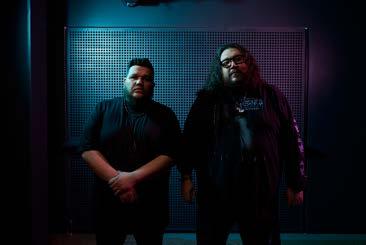
liver a great night out for your ears, your dancing feet and your spirits! This community-centered concert series is supported by friends and partners from the Ontario Arts Council, Toronto Arts Council, Ontario Creates, TD Commitment, Canada Council for the Arts and the Federal Economic Agency for Southern Ontario.
TKMF24 makes a great destination weekend get-away for music fans of all cultural backgrounds. With some of the most exciting Indigenous artists on Turtle Island, the festival is a gathering of nations from across the country. Tickets and more information about the festival is on their website tkmf.ca
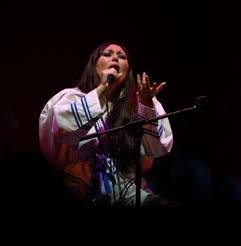
lets and inadequate distribution of lighting equipment. When this occurs, these fires most often originate in a bedroom. Another common cause of electrical home fires is faulty wiring and related equipment malfunction. It is important for homeowners to be aware of potential electrical issues and remedy them quickly to avoid home fires. Ensuring electrical systems are up to code and addressing issues with the help of a qualified electrician can reduce the risk of electrical fires.




By Alessia Passafiume
Residential school survivors say the federal government is keeping the truth about those institutions in the dark by cutting back on funding for records and ground searches looking for unmarked graves of children who died at the schools.
More than 150,000 children were forced to attend residential schools, and many survivors detailed the horrific abuse they suffered to the Truth and Reconciliation Commission. An estimated 6,000 children died while attending the schools, although experts say the actual number could be much higher.
In 2021, after numerous First Nations reported locating what appeared to be human remains on the sites of former residential schools, Ottawa stepped in with more than $116 million to search for unmarked graves and to memorialize the children who died. As of March 2024, the government had actually provided $216
million through 146 different funding agreements. That ended up averaging about $71 million a year.
In the most recent budget, the government allocated $91 million over the next two years to continue to work to look for graves, or $45.5 million a year.
Laura Arndt, the lead for the Survivors' Secretariat, a survivor-led organization seeking to document and uncover the truth of what happened at the Mohawk Institute in Brantford, Ont., criticized what she says cannot be characterized as anything but a funding cut.
Communities and organizations have been investigating residential schools for decades, including through records. The more recent ground searches, using ground-penetrating radar, are being done in the hopes of finding the children's remains and bringing them home.
"We're trying to uncover a history that's 150 years old, and the limited funding we've been provided in three years is not doable," Arndt said.

The Survivors Secretariat has indicated the change will have a dramatic impact on communities who have started their searches and those hoping to secure funding of their own. Communities and organizations were informed via a teleconference with federal government officials, and they say they had their microphones muted and had a limited ability to push back.
"They're waiting for us poor old residential school people to die," said Roberta Hill, a survivor of the Mohawk Institute.
"Well, we're not going anywhere — not yet, that I know of. I said I'll live as long as I can because I want answers and I want the truth. There is no reconciliation — absolutely none — if you're going to lie to us and do this to us."
Over the summer, Crown-Indigenous Relations Minister Gary Anandasangaree reversed a decision to limit each individual community's funding for a search to $500,000. Previously individual allotments

were capped at $3 million, and Anandasangaree said that original cap would be restored.
Speaking on Parliament Hill during the Truth and Reconciliation Day ceremony Monday, Anandasangaree wouldn't discuss the funding issue. "I'll be glad to address this in a more wholesome way later on what we have done," he said in an interview. "And I've heard from survivors and I think we've done the right thing in terms of lifting the cap and we will continue to work with all those who are impacted. And I look forward to having this conversation at a later point."
Scott Hamilton, a professor of anthropology at Lakehead University who has been involved with residential school investigations, said the federal government is obligated to provide communities with the supports needed to complete the work they're doing.
"If we choose to gloss over, if we choose to ignore, if we continue to live in la-
la-land that these terrible things didn't happen, or they might not have been as bad as what was said, we're kind of choosing to close our eyes and hum a song so we don't have to bear witness to what happened — to confront the fact that terrible things were done in the name of our nation," said Hamilton.
"An important part of Canadian legacy is to grapple with those dark, painful facts and try to heal from (and) try and seek reconciliation. But one doesn't get reconciliation without acknowledgment of those painful truths."
The Survivors Secretariat released a report Monday calling for 23 million documents to be released to the National Centre for Truth and Reconciliation, along with RCMP records related to missing children and unmarked burials.
It also says Canada needs to provide stable, longterm funding for those investigations, and to allow communities to determine what supports they need to carry out their work.
Arndt said amid a growing
trend of residential school denialism, the records and funding to find them are becoming even more important.
NDP MP Leah Gazan introduced a private member's bill in the House of Commons last week that seeks to criminalize residential school denialism, saying it would help stop harm caused toward survivors, their families and communities.
Asked Monday if that bill should get support from all federal parties, Hill said it should "absolutely." "I'd like them to come forward, face-to-face with us, the survivors who went through all of this," she said.
"We'll tell you it's a reality; it was a reality for all of us."
Prime Minister Justin Trudeau, speaking to reporters in Inuvik, N.W.T., on Monday, said his government has to "look very carefully at this bill," saying whenever there are limits put on free speech, careful steps must be taken.

Saturday, October 5, from 10:00am - 12:00pm & Thursday, October 10, from 5:00pm - 7:00pm

and Boralex Inc. invite the
to


2018 Jay Flight 28BHBE
$18,000 or reasonable offer
Located - in Caledonia on #6 Sleeps 10 call 519-358-2639
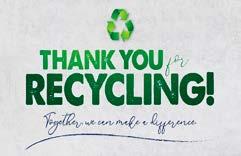
Massive Downsizing Yard Sale (Hoarder’s in Rehab, Please Help)
Oct. 4th & 5th 9AM to 3PM
Sunday, Oct. 6 (9-1) Bag and Box Day Half Price All Bag Items
7365 Indian Line Rd. (Town Line)
Clothes, all sizes, Shoes, Jackets, Games, Movies, CDs, Books, Household Items, Halloween Items, SM Dog Cages, Futon, Suitcases, Snow Tires, and Much More.
Bake Sale
Ohsweken Baptist Church October 12/24 9 am – 1 pm

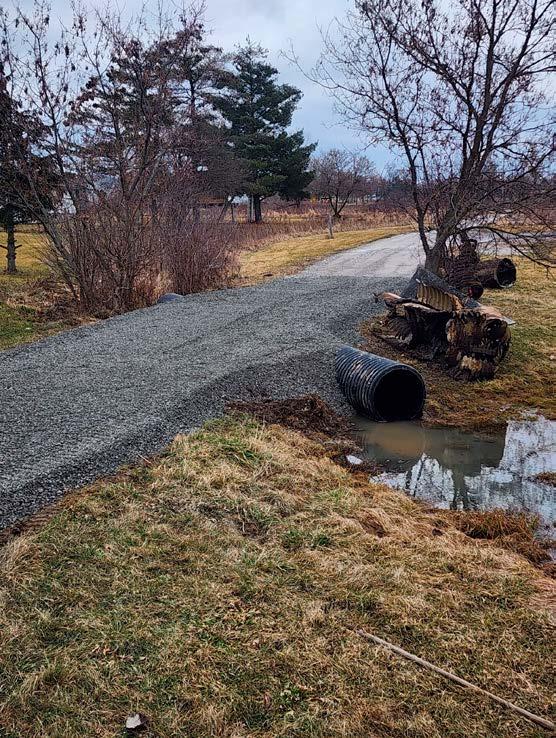

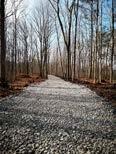


CLUES ACROSS
1. Separate with an instrument
5. State clearly
11. One-time MLB speedster Gordon
14. Broad in scope
15. Lacking social polish
16. Amount of time
17. Frame
19. Automobile
20. Caps
21. High school dances
22. Utilize
23. Checked
25. One-sided
27. Having an extreme greed for wealth
31. Potted plants
34. We all have one
35. Lake north of the Kalahari
38. Unidentified flying object
39. Aging persons
41. Small amount
42. Mother of Perseus
44. Ornamental waist box
45. Officials
46. Uncertain
49. A cotton fabric with a satiny finish
51. Extensive, treeless plains
55. Your consciousness of your own identity
56. Consumer advocate
Ralph
60. Notable Spanish sports club
61. Body part
62. One’s responsiveness
64. Woman (French)
65. Ready and willing to be taught
66. Muslim ruler title
67. Unhappy
68. Gradually disappeared
69. Able to think clearly
CLUES DOWN
1. Brushed
2. Water sprite
3. Ones to look up to
4. Monetary units
5. We all have one
6. Marine invertebrate
7. One who institutes a legal proceeding
8. Outer
9. Parallelograms
10. Uncomfortable feelings
11. Cross to form an X
12. Remove
13. Some pages are dog-__
18. Capital of Ukraine
24. A citizen of Denmark
26. Eighth month (abbr.)
28. Hindu queens
29. Acids structurally related to amino acids
30. Rider of Rohan in Tolkien
31. Wet dirt
32. Russian city
33. Observed
36. Irate
37. Travelers need them
39. Musical composition
40. Auction
43. Form of “to be”
45. Women
47. Inspire with love
48. Think Japanese ankle sock
49. Appears
50. Old World lizard
52. The lead dancer: __ ballerina
53. Protein involved in motion
54. Rosalind Franklin biographer
57. Popular 1920s style art
58. __ Blyton, children’s author
59. Abnormal breathing 63. A place to rest












ARIES – Mar 21/Apr 20
Even though you told yourself you’ll just suck it up and get through the week, you’re having a change of heart, Aries. Some modifications are necessary to navigate the waters.
TAURUS – Apr 21/May 21
Taurus, all bets are off this week, especially if you’ve been smoothing over your emotions to get along with someone close by. All true feelings are bound to come to the surface.
GEMINI – May 22/Jun 21
This week you may not be feeling like yourself, Gemini. Low energy have you feeling out of sorts. Spend some time with a close friend to get things back on track.
CANCER – Jun 22/Jul 22
Cancer, your friends always have your back, but this week there is a disruption in your crew. Someone isn’t playing nice, but a few words from you will smooth things over quickly.
LEO – Jul 23/Aug 23
You are anxious to get started on an exciting project, Leo. Others on your team may need a dose of inspiration. It could be up to you to motivate the troops.
VIRGO – Aug 24/Sept 22
Virgo, you made a commitment to keep things toned down. Enjoy the slower pace and take note of how the lack of hustle and bustle suits you.
LIBRA – Sept 23/Oct 23
Normally you’re satisfied to let someone else take the lead and make all of the decisions, Libra. This week you might need to be the one taking a leadership role.
SCORPIO – Oct 24/Nov 22
A surprising bit of information may be brought to your attention, Scorpio. You might be up for a promotion or an exciting change could be coming in your personal life.
SAGITTARIUS – Nov 23/Dec 21
Don’t stop now when you are so close to the finish line, Sagittarius. It may be a busy week ahead, but you will reap the rewards of your labors. Remain patient.
CAPRICORN – Dec 22/Jan 20
Take inventory of your romantic relationship, Capricorn. You might need to put in a little extra effort if things haven’t been as smooth as you would like. Don’t give up on this.
AQUARIUS – Jan 21/Feb 18
Aquarius, you are working at keeping everyone on the same page. Continue to emphasize the importance of teamwork. Others notice and appreciate your efforts.
PISCES – Feb 19/Mar 20
It is not possible to make it all the way through your to-do list this week, so plan on some carryover to the next, Pisces. Space out your work so you don’t get too overwhelmed.

Free, confidential help, advice and support for Indigenous women, by Indigenous women
